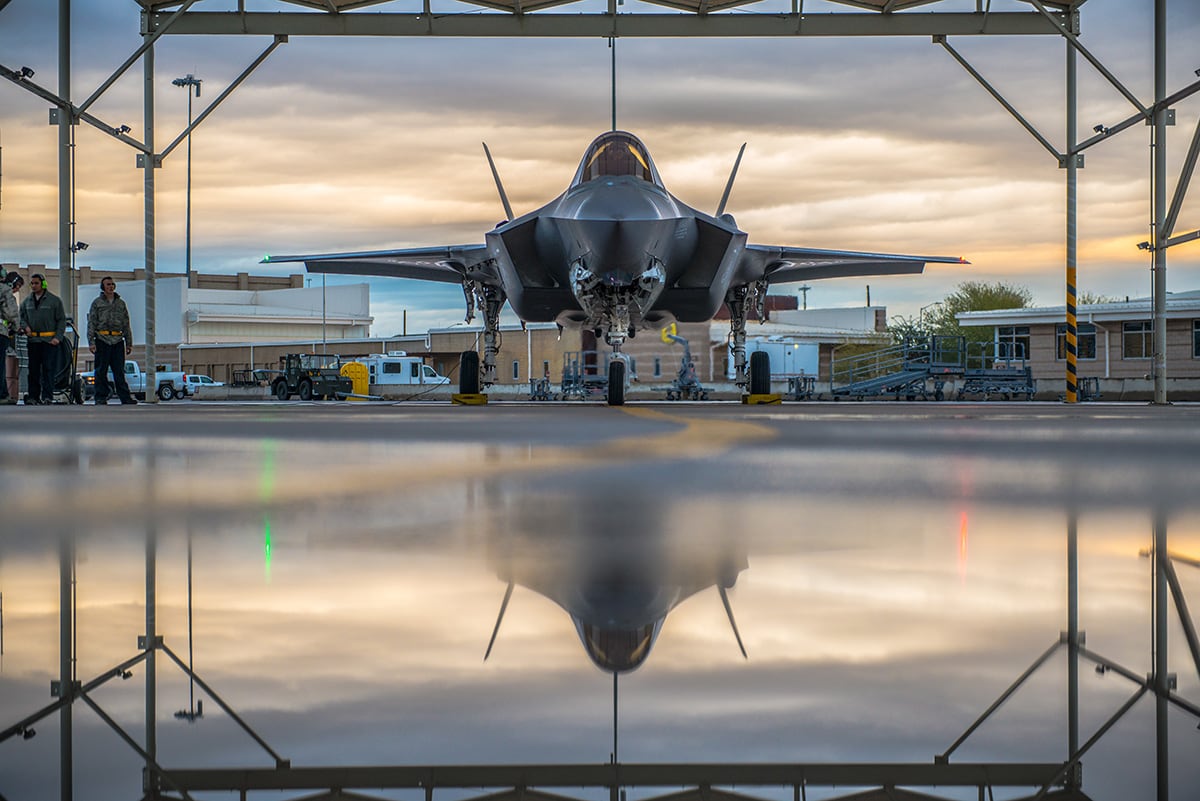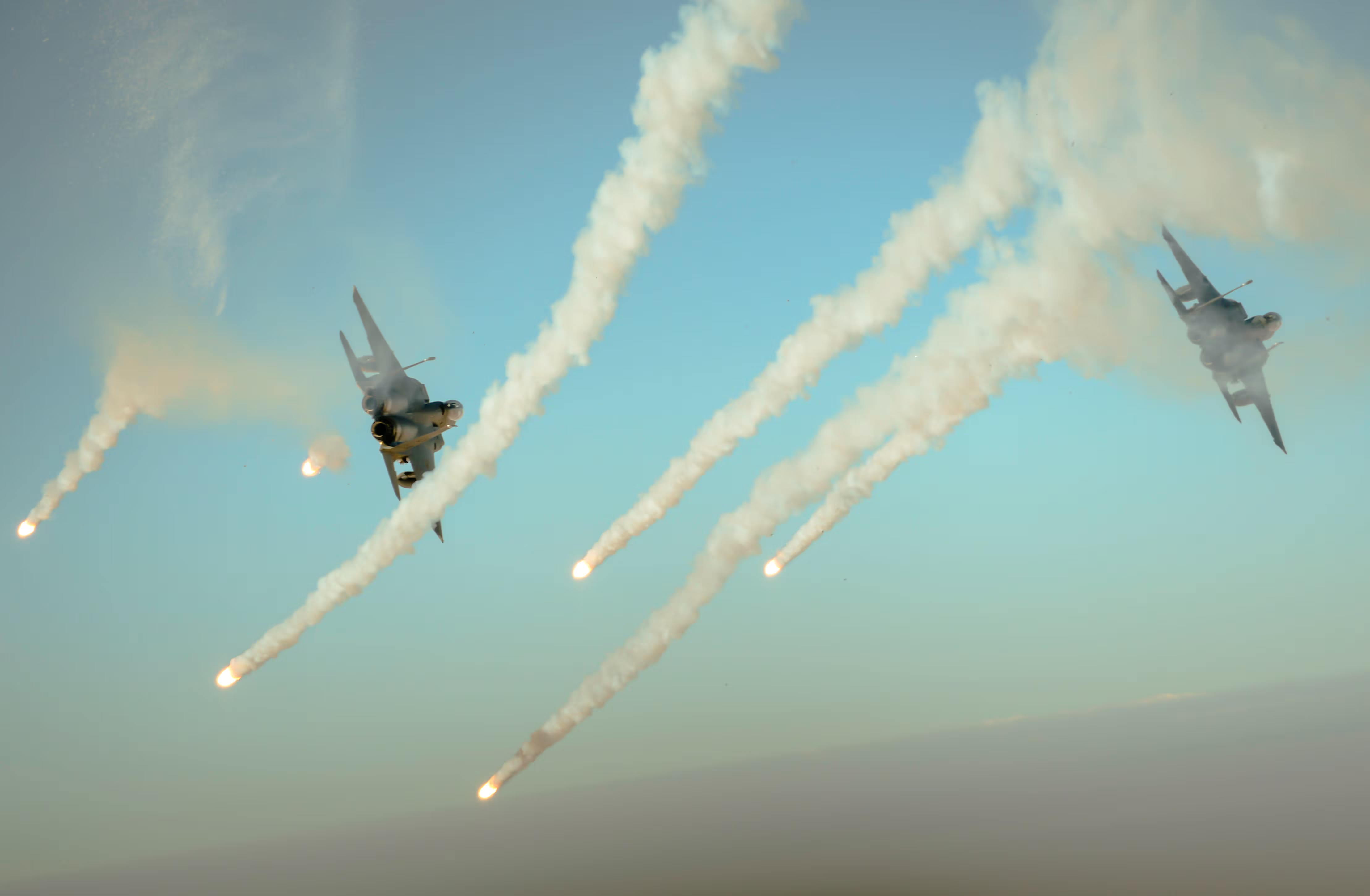WASHINGTON — Lockheed Martin and U.S. Air Force officials may be downplaying the prospect of an upcoming budget battle surrounding the F-15X and the F-35 fighter jets, but influential F-35 supporters in Congress and around the Capital Beltway are mounting an offensive against Boeing’s new F-15 variant.
All signs point to the Air Force unveiling its plan to buy a new version of the F-15 in its fiscal 2020 budget proposal, tentatively scheduled for release in mid-March. Though numbers have fluctuated, a Feb. 19 report from Bloomberg says the service plans to purchase eight F-15X planes in FY20, with an expected total buy of about 80 jets.
Meanwhile, F-35 purchases will remain stagnant, with 84 jets set to be requested in FY20, and 48 of that sum for the Air Force’s F-35A conventional variant, Bloomberg said.
RELATED

That number is a far cry from the rate of 80 F-35As per year that the Air Force originally believed it could start procuring in 2014. Even the goal of 60 "A" models per year seems increasingly out of reach in the near term.
The result is that the Air Force’s F-15X procurement is starting to face pushback, particularly from F-35 supporters in the think tank world and stakeholders in Congress.
“There’s always the risk of diluting your other primary effort, which is [an] increased buy of F-35. That could be a problem,” said Herbert Carlisle, president of the National Defense Industrial Association and a retired four-star Air Force general.
Cost questions
On Feb. 13, Republican Sens. John Cornyn and Ted Cruz of Texas, Susan Collins of Maine, Marco Rubio of Florida, and Lisa Murkowski of Alaska sent a letter to President Donald Trump asking him to rethink the F-15X buy. All five senators come from states that make the F-35 or where the Joint Strike Fighter is planned to be based.
“We are extremely concerned that, over the past few years, the DoD has underfunded the F-35 program and relied on Congress to fund increases in production, sustainment and modernization,” the lawmakers wrote, adding that the Air Force buy rate should increase to 60 planes in FY20 to ramp to 80 jets a year later on.
"Nonetheless, it is my understanding that the DoD may propose buying outdated fourth-generation F-15 fighters, like the F-15X, for $100 million per jet in the FY20 budget request. At a cost 20 percent higher than the advanced F-35A, this is far from a good deal."
It’s unclear where the lawmakers got these figures, but Bloomberg reports that Lockheed mounted an intense, behind-the-scenes lobbying campaign against the F-15X, alleging that each F-15X could cost about $90 million.
The price data put forward by Cornyn is misleading in a number of ways. It postulates that the F-35A costs about $80 million, but its unit price was set at about $89 million in the latest contract and likely won’t reach $80 million until 2020.

Meanwhile, a source with knowledge of the F-15X program pushed back on the $100 million estimate, saying that figure includes funding for recurring engineering and program setup costs that aren’t normally factored into the flyaway cost.
While Boeing refuses to comment on the price it’s offered to the Air Force, the company has put forward a firm, fixed-price deal that would leave it responsible for any cost overruns. One source told The War Zone that the F-15X will cost “less than an F-35 is ever forecast to cost, best case," which could peg it around the $80 million goal price for the F-35.
To ramp up, or not to ramp up?
Still, some air power analysts in Washington — especially those who are already supportive of the F-35 — have been skeptical that the F-15X will be able to deliver at prices equal to the Joint Strike Fighter.
John Venable, a senior research fellow on defense issues for The Heritage Foundation and a former F-16 pilot, wrote in a Feb. 8 article that the F-15X might not be worth the investment.
While the addition of a new radar, electronic warfare system and additional weapons-carrying capacity makes the F-15X a formidable plane, it still would not be survivable in a future war with Russia or China, Venable said. The enhancements added to the F-15X, he argued, could cause it to lose the thrust-to-weight ratio and handling characteristics that made the F-15C/D such a capable air-to-air fighter.
“Congress should be very skeptical of plans to buy a legacy fighter such as the F-15X and, at the very least, debate the idea of expanding F-35 production capacity to meet the needs of the Air Force,” he wrote.
Buying an F-15X doesn’t fit in with the new National Defense Strategy, which is centered around the return to military competition with near-peer forces like Russia and China, said David Deptula, a retired three-star Air Force general and dean of the Mitchell Institute for Aerospace Studies. “The question then becomes: Why would the United States Air Force be seeking to go back and buy new old, forth-gen aircraft, even if they are extraordinarily more capable?”
Carlisle, the NDIA president, is more supportive of the F-15X procurement, saying it makes sense for the Air Force to recapitalize the F-15, and that the "X" model — already a very capable fighter — will be an “even better airplane” paired together with the F-35.
Still, he worries that buying the F-15X could adversely impact the F-35 ramp-up.
When Carlisle was head of Air Combat Command from 2014 to 2017, he advocated for a surge in F-35 procurement to 60 planes per year as rapidly as possible, but he was met with a constrained budget. Even as spending grew under the Trump administration, Air Force leaders have opted to put off the ramp to 60 planes.
“If you talk to [Air Force] Secretary [Heather] Wilson and [Air Force] Chief [of Staff Gen. Dave] Goldfein, their priority is to increase the F-35 buy. They’re still committed to that airplane,” he said. “But you know, there are views inside the department that may not necessarily align with that.”
In September, Wilson said the Air Force was not considering procuring new F-15s. If that was the case, where is this support for the F-15X coming from?
Numerous officials told Defense News that the Pentagon’s Cost Assessment and Program Evaluation office was able to make the case that new F-15X planes would be a prudent investment, eventually winning over the Office of the Secretary of Defense. The plan also had some backing by Air Combat Command.
The Defense Department “did a lot of different deep dives” into the affordability of the F-15X and how it could be complementary to the F-35, one source said. One key takeaway was that the F-35 would be unable to carry 8,000-pound hypersonic missiles in its internal bay.
RELATED

Since news of the F-15X buy leaked to the press, Air Force leadership have characterized the decision to purchase new F-15s as a step needed to stave off the retirement of the service’s largest fleet of air superiority planes.
“Of those four weapons systems that we need to fly into the 2030s, as we build up size of the F-35 fleet, one of them is not going to make it, and that’s the F-15C,” Goldfein said in a recent interview.
However, he maintained that the service would buy all 1,763 jets that comprise the Air Force’s portion of the program.
“I’m not backing an inch off of the F-35,” Goldfein said. “The F-35 buy that we’re on continues to remain on track. And I’m not interested in taking a nickel out of it when it comes to buying anything else in the fighter portfolio.”
Valerie Insinna is Defense News' air warfare reporter. She previously worked the Navy/congressional beats for Defense Daily, which followed almost three years as a staff writer for National Defense Magazine. Prior to that, she worked as an editorial assistant for the Tokyo Shimbun’s Washington bureau.






